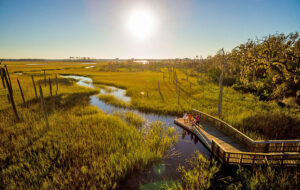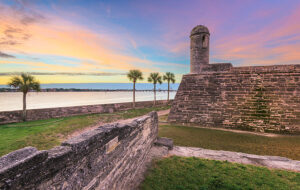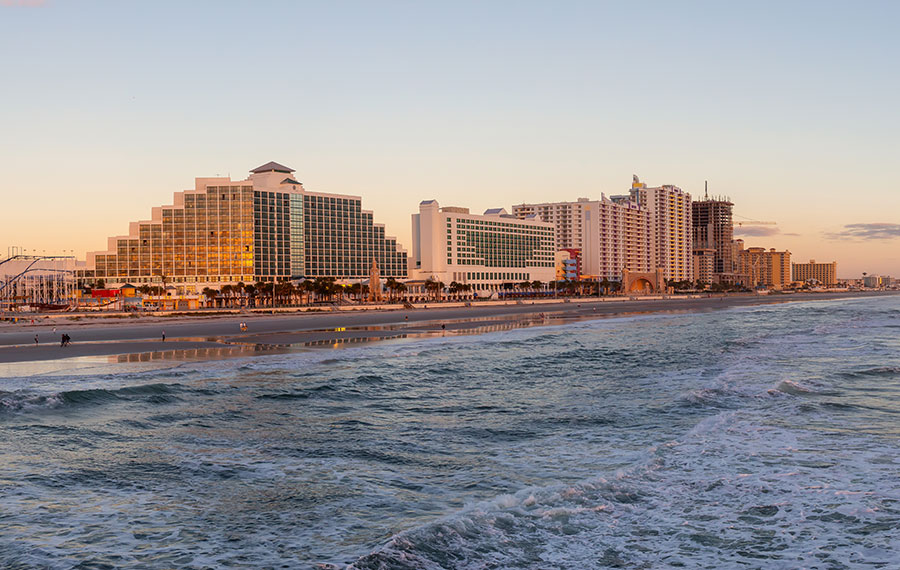
Welcome to the beautiful destination of Daytona Beach, where the sun always shines and the ocean breeze makes everything lively. As you stroll along its iconic boardwalk or soak up the sun on its famous sands, it’s easy to see why this coastal gem is a top location for tourists from all over the world. But there’s so much more to discover beyond its stunning beaches and bustling tourist attractions. In fact, we’ve compiled a list of 25 fun facts about Daytona Beach that will amaze and inspire you to explore this charming city on your next trip. So grab your sunscreen and shades! We’re about to take you on an exciting journey through some little-known but fascinating tidbits about Daytona Beach.
1) The Ponce Inlet Lighthouse is the tallest lighthouse in Florida.
Standing tall and proud on the Florida coastline, the Ponce de Leon Inlet Light Station commands attention with its impressive height. At 175 feet, it is the tallest lighthouse in the entire state. The lighthouse has been standing since 1887, guiding seafarers safely through the challenging waters just south of Daytona Beach. Visitors can climb the 203 steps to the top for a breathtaking panoramic view of the beautiful surroundings below. With its rich history, stunning architecture, and unbeatable vistas, the Ponce de Leon Inlet Lighthouse is a must-see destination for anyone visiting the area.
2) Daytona Beach has hosted the annual Bike Week for over 80 years.
For over eight decades, bikers from all over the world have descended upon Daytona Beach for the annual Bike Week. It’s a tradition unlike any other, bringing together people from all walks of life to celebrate their love of motorcycles. The festivities are endless, with thrilling races, captivating concerts, and the latest in motorcycle technology on display. Whether you’re a seasoned rider or simply a bike enthusiast, Bike Week has something for everyone. And with the beautiful beaches and warm Florida weather as a backdrop, there’s no better place to be in the springtime.
3) One of the first structures on Beach Street was a log cabin located where the Angell & Phelps Chocolate Factory now stands.
Daytona Beach’s iconic Beach Street is full of charm and history, but did you know that one of the first structures to grace this famous street was a simple log cabin? That’s right, where the Angell & Phelps Chocolate Factory now stands was once a humble log home, built and lived in by some of the area’s earliest settlers. Over the years, three different families took up residence there. It’s amazing to think about how much has changed over the years on this bustling street, and yet some things still remain the same. Today, Beach Street is filled with shops, restaurants, and of course, plenty of sweet treats to enjoy. But it all started with that one little cabin so many years ago.
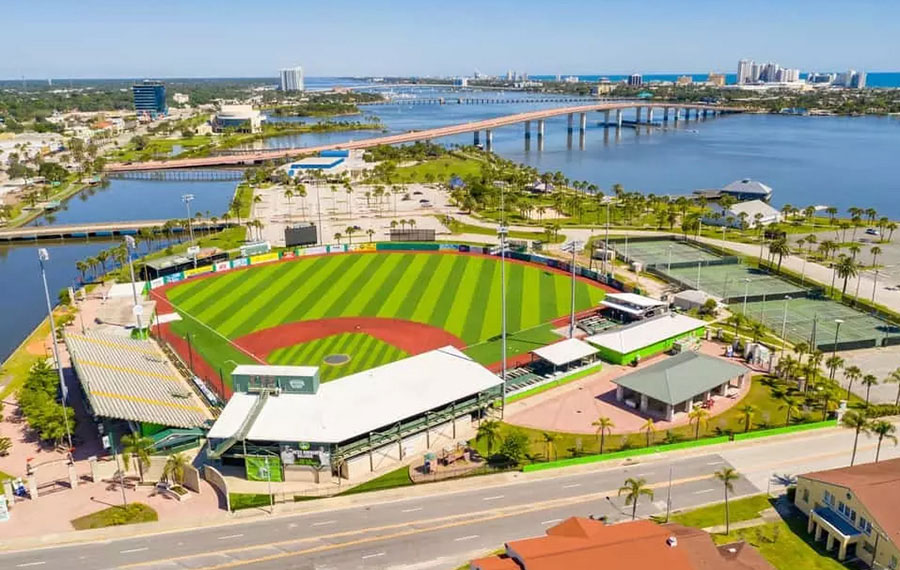
4) Daytona was named after Mathias Day, who built the first hotel there in 1874.
Have you ever wondered where the name “Daytona” came from? It’s named after Mathias Day, who built the first hotel in the area back in 1874. The Palmetto House and Day’s other properties didn’t do as well as he’d though, and unfortunately Day was forced to return to his hometown in Ohio. Later, when the choice to incorporate was made, the townsfolk honored Mathias Day for his efforts by naming it after him. Today, Daytona is known for its beautiful beaches, world-famous speedway, and exciting activities like surfing, fishing, and boating. Whether you’re relaxing on the sand or cheering on your favorite driver, take a moment to appreciate the rich history behind the town’s name and the man who started it all.
5) Daytona Beach is home to the minor league Daytona Tortugas, an affiliate of the Cincinnati Reds.
If you’re a baseball fan and find yourself in the Daytona Beach area, don’t miss the chance to catch a game featuring the Tortugas. This minor league team, affiliated with the Cincinnati Reds, provides an entertaining and affordable option for sports fans looking for a fun night out. Watching these up-and-coming players give it their all on the field is a true testament to the grit and determination required to succeed in professional sports. So grab some peanuts and cracker jacks, put on your team colors, and head to the Jackie Robinson Ballpark for a memorable evening of America’s favorite pastime.
6) Daytona Beach was dubbed “The World’s Most Famous Beach” in the 1920s.
For almost a century, the slogan “The World’s Most Famous Beach” has been synonymous with Daytona Beach. The man behind this iconic phrase was most likely Jerome Burgman, a visionary printer, civic leader, and city commissioner. His advertising and promotional efforts in the 1920s helped put Daytona Beach on the map, and the catchy slogan has stuck around ever since. Today, the beach continues to attract visitors from all over the world who come to experience its soft sand, warm sun, and crystal-clear water. Whether you’re a tourist or a local, there’s something special about spending a day on the world’s most famous beach.
7) John D. Rockefeller spent his final years at his winter estate in Ormond Beach.
John D. Rockefeller was a well-known philanthropist, and although his life was spent accumulating great wealth, his final years were spent giving back to society. Rockefeller lived out his winter months at his picturesque estate in Ormond Beach, known as The Casements. This luxurious property was a true gem, with stunning views of the Halifax River and gardens for Rockefeller to relax and reflect on his life’s work. Though he passed on, his generosity lived on through the causes he supported, and visitors can still catch a glimpse of the man behind the philanthropy by visiting his beloved winter retreat.
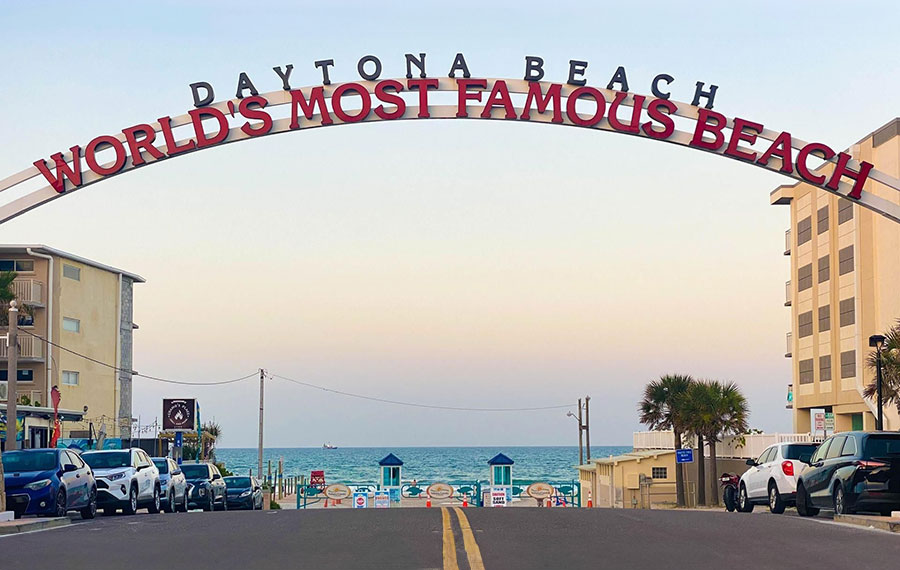
8) Bill France founded NASCAR in 1948 and built the Daytona International Speedway in 1959.
Daytona Beach has a rich history that is inextricably linked with NASCAR. It was here that Bill France founded the organization that would go on to become the most popular form of racing in the country. But France knew that the beachfront race tracks that had been used up until that point were simply not sustainable. So he embarked on an ambitious project – the construction of a brand new speedway that would be fit to host the premier event of the series, the Daytona 500. And so, Daytona International Speedway was born, opening its gates for the first time in 1959. Today, it remains one of the most revered racing venues in the world and a testament to the vision of its founder.
9) In 1946, Jackie Robinson played in Daytona Beach in the first integrated spring training baseball game.
On a historic day in 1946, Jackie Robinson took the field for the Montreal Royals in Daytona Beach. This would not only be his first game with the team, but it would also mark the first integrated spring training game in baseball history. Robinson’s debut was met with both cheers and jeers, as segregation was still very much a part of American society. However, Robinson’s unparalleled talent quickly silenced any doubts about his ability to play alongside white players. The game was played at City Island Ballpark, which was later renamed Jackie Robinson Ballpark in honor of his legacy and the groundbreaking moment that took place on its field.
10) As early as 1903, Ormond Beach became known as the “Birthplace of Speed” due to the various land speed records set there.
Located just a few miles north of Daytona Beach, Ormond Beach has left an indelible mark on motorsports history. Over a century ago, the area became a hub for setting land speed records, earning it the nickname “Birthplace of Speed.” Drivers from around the world flocked to the hard-packed sand and flat terrain of Ormond Beach to push their vehicles to the limits, with record-breaking speeds exceeding 200 miles per hour. Today, the spirit of speed continues to thrive in the Daytona Beach area, with high-octane events like the Daytona 500 and Daytona Bike Week drawing enthusiasts from around the globe. However, it all started with Ormond Beach, a true trailblazer in the world of motorsports.
11) The residents of Daytona Beach adopted a stray dog named Brownie from 1939 to 1954.
The story of Brownie the dog has become a beloved part of Daytona Beach’s history. Despite being a stray and having no official owner, Brownie managed to capture the hearts of all the locals. For 15 years, he roamed the streets of the city, spreading happiness and tail wags wherever he went. His loyalty knew no bounds, and he was loved by everyone. Even after his passing in 1954, his memory remained alive. Those who visit the Riverfront Esplanade in Daytona Beach can pay their respects to Brownie at his grave and monument. They can also leave a painted rock in honor of their own furry friends. Brownie’s story is a reminder of how a little love and kindness can go a long way.
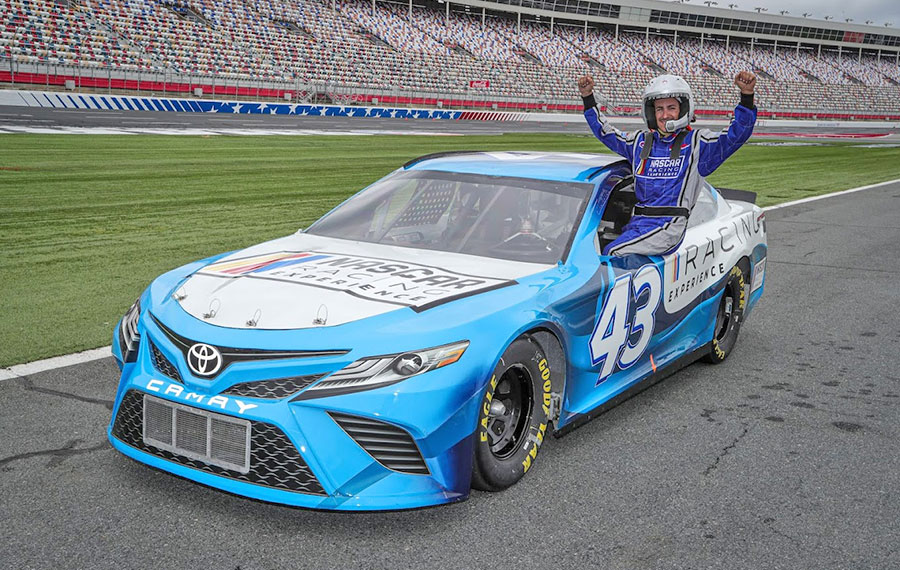
12) The NASCAR Racing Experience lets you drive a stock car on the Daytona International Speedway.
If you’ve ever wanted to feel the thrill of a NASCAR race, then Daytona is the place to be. The NASCAR Racing Experience offers visitors an opportunity to climb behind the wheel of a real stock car and take it for a spin around the famous Daytona International Speedway. Take in the beauty of the world-renowned oval track as you speed along, feeling the raw power and energy of the car around you. With trained professionals riding shotgun and providing expert guidance, you’ll feel like a seasoned pro in no time. The experience is unforgettable, and it’s no wonder NASCAR fans from all over the world flock to Daytona Beach for this once-in-a-lifetime opportunity.
13) The LPGA, headquartered in Daytona Beach, is the oldest continuing women’s professional sports organization in the country.
The Ladies Professional Golf Association (LPGA), has been a prominent figure in the world of women’s professional golf for more than seventy years. Headquartered in the sunny city of Daytona Beach, the association boasts a membership of over 2,300 women representing more than thirty countries. The LPGA is dedicated to promoting women’s golf and has been instrumental in developing and cultivating the talent of some of the most successful women golfers in history. With its diverse and storied membership, the LPGA continues to lead the way in women’s sports and inspire generations of young girls around the world.
14) New Smyrna Beach was named by Andrew Turnbull after his wife’s Greek homeland.
It is often said that behind every great man is a great woman, and for Andrew Turnbull, his wife, Gracia Maria Rubini, was no exception. Born in 1736 in Smyrna, Asia Minor, Gracia hailed from a family of Greek descent and was well educated in the romantic city of Paris. It was here where she first met her future husband, who was studying medicine at the time. Together, this dynamic duo set out to explore the new world, ultimately settling down to establish what is now known as New Smyrna Beach, a beautiful coastal strip in Florida. The story of Gracia and Andrew’s journey to the new world is a testament to the resilience and perseverance of the human spirit, and a reminder of the incredible impact that love and determination can have on the world we live in.
15) Janet Guthrie was the first female driver to compete in the Daytona 500.
In 1976, history was made in Daytona Beach as Janet Guthrie became the first female driver to compete in the Daytona 500. This was no small feat, considering the male-dominated nature of the sport at the time. Guthrie’s performance was nothing short of impressive, as she finished in 12th place. Guthrie paved the way for future generations of female drivers to break through barriers and pursue their passion for racing. Her legacy serves as a reminder that gender should never be a barrier to one’s dreams and aspirations.
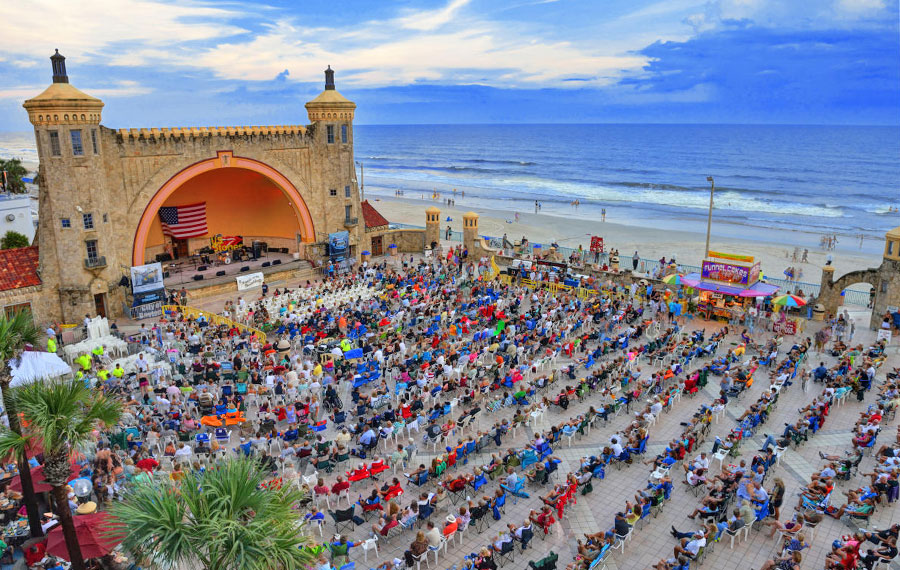
16) Dunlawton Sugar Mill Gardens in South Daytona began as a roadside zoo attraction.
In the late 1940s, Dr. Perry Sperber wanted to cash in on the roadside attraction industry in Daytona Beach. He leased a plantation property and opened one of the first theme parks in the state, dubbed Bongoland. Named after a trained baboon named Bongo that was kept on the property, the park was a roadside zoo attraction that targeted tourists traveling on U.S. Highway 1. However, despite the hype and excitement surrounding the opening, Bongoland was only operational for a short period of time from 1948 to 1952. Today, Dunlawton Sugar Mill Gardens is remembered as a significant piece of Florida’s history and a precursor to the more successful theme parks that would follow in the years to come.
17) The Daytona Beach Bandshell was built of coquina, a composite stone of compressed shell, coral, and sand.
The Daytona Beach Bandshell is a unique and beautiful amphitheater that has become a beloved attraction in Oceanfront Park. Constructed in 1937 by architect Alan J. MacDonough, the bandshell is made entirely of coquina, a type of rock composed of small shell fragments. This gives the structure a striking appearance and a distinctive texture that sets it apart from other outdoor venues. Located on the north end of the Boardwalk amusement area, the bandshell offers breathtaking views of the Atlantic Ocean, making it a popular spot for concerts and other events. From jazz and Dixieland to contemporary and tribute bands, the performances held here are always diverse and exciting. With the ability to accommodate up to 5,000 people, the Daytona Beach Bandshell is the perfect place for outdoor weddings, receptions, group activities, and other festivities.
18) Ormond Beach is named for James Ormond I, an Anglo-Irish-Scottish sea captain.
Ormond Beach is a place rich in history and named after none other than James Ormond I, a sea captain of Anglo-Irish-Scottish descent commissioned to sail to the New World by King Ferdinand VII of Spain. His involvement in bringing Franciscan settlers to this part of Florida was pivotal in establishing what we now know as Ormond Beach. It’s fascinating to think about the sheer amount of courage and determination it must have taken to sail across treacherous waters to bring travelers over to a new land. To this day, the town continues to pay tribute to Captain Ormond and his legacy lives on through the town’s name.
19) The Daytona 500’s opening day race was the first and last time they allowed convertibles.
The roar of engines filled the air as history was made on February 22, 1959 in Daytona Beach. Over 41,000 excited spectators eagerly watched as drivers took to the new speedway for the very first Daytona 500 race. The competition was fierce as cars, both hard tops and convertibles, zipped around the track in a thrilling display of speed and skill. Interestingly, this inaugural race was the only time convertibles were included in the 500, making it an unforgettable event in NASCAR history. The energy of that day lives on, nearly six decades later, as racing enthusiasts continue to gather each year to celebrate the legendary Daytona 500.
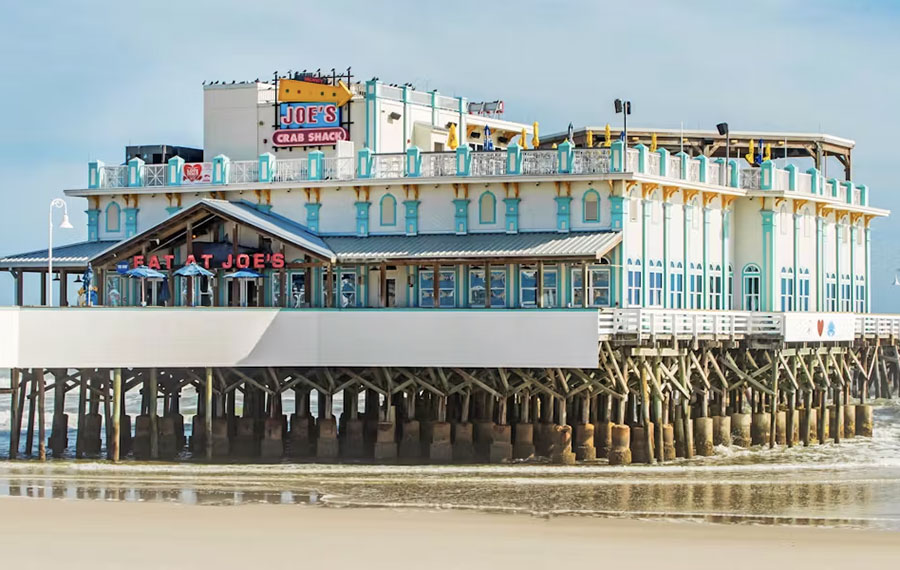
20) The Southeast Museum of Photography began as a classroom exhibit before expanding into its own museum in 1992.
The Southeast Museum of Photography might be a small facility, but it has a rich history of providing a space for some of the best photography exhibitions in the U.S. Its story begins in 1975 when professor Dan Biferie arrived at Daytona Beach Community College and realized that there was no exhibit space on campus for students to display their works or view the works of other artists. He started with a temporary exhibit in his classroom, which quickly gained popularity and moved to the campus library. In 1992, it finally opened as its own venue and has been thriving ever since. Today, the Southeast Museum of Photography is one of only thirteen museums in the country that focuses exclusively on photography. It’s an incredible achievement and a testament to the museum’s dedication to keeping the art of photography alive.
21) Daytona Beach’s Main Street Pier opened in 1925 as the Pier Casino.
The history of Daytona Beach’s Main Street Pier is a storied one. Beginning in 1925 as the Pier Casino, it boasted a length of 1,000 feet and featured a stunning Victorian style building. Inside, the ornate ballroom could accommodate an impressive 2,000 dancers and hosted some of the biggest bands of the day. Known for its charity balls, weddings, beauty contests, and other social events, the Pier Casino was a hub of activity in the area. During the beach’s racing years, some of the pilings were even removed to allow race cars to pass underneath. Famous racers were also known to frequent the pier for photographs. In recent years, the city took over the pier and refurbished it, bringing in a thriving Joe’s Crab Shack location. As you walk along the pier today, you can’t help but imagine all the history that took place here over the past century.
22) Buc-ee’s in Daytona offers 104 gas pumps and a 50,000 sq ft convenience store.
Located at I-95 and LPGA Boulevard in Daytona Beach, Buc-ee’s is a one-stop destination that offers so much more than just gas. For all the foodies out there, Buc-ee’s selection of jerky, Texas BBQ, fudge, pastries, and Beaver Nuggets is worth the visit alone. But the food isn’t the only reason to visit Buc-ee’s. The store is filled with a wide array of products, including souvenirs and branded merchandise. Don’t forget to check out their cartoon beaver mascot, Buc-ee, while you’re there. With so many eclectic products to browse, Buc-ee’s is a must-see destination for anyone visiting Daytona Beach.
23) The first stock car race was held in 1936 on the Daytona Beach Road Course, located in the present-day town of Ponce Inlet.
On March 8th, 1936, adrenaline junkies and motorheads alike gathered at the Daytona Beach Road Course in what is now Ponce Inlet to witness the debut of a new kind of competition: the stock car race. As engines roared and tires screeched on the sand and asphalt track, drivers pushed their cars to the limit in a high-speed spectacle that would spawn a new era of auto racing. Today, Daytona Beach remains a mecca for stock car racing fans, drawing thousands of visitors each year to experience the excitement and history of this iconic sport firsthand.
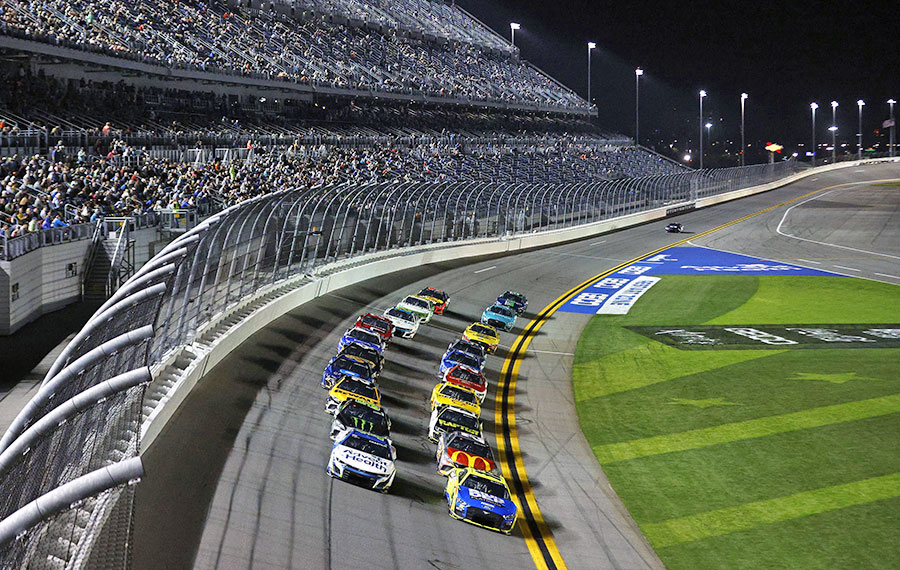
24) The Fairchild Oak is over 400 years old and one of the largest live oak trees in the Southeast U.S.
The South Trailhead parking area at Bulow Creek State Park promises a journey through time with its historic roots. While preparing to hike the trail, be sure to take a moment to marvel at the majestic Fairchild Oak tree that has stood its ground for more than 400 years. Its sprawling branches have graced the skies during many of Florida’s defining eras. From the moment Alvaro Mexia followed a Native American trail through this area in 1605, to the time when the tree stood as part of the Damietta plantation, owned by James Ormond in the 1820s. The age-old beauty of this remarkable tree is a testament to the deep roots of Florida’s vibrant history and unwavering resilience.
25) Since opening in 2002, the Marine Science Center in Ponce Inlet has cared for over 27,000 sea turtles.
Tucked away in the charming town of Ponce Inlet, the Marine Science Center has been a beacon for marine conservation for over 20 years. The center’s commitment to educating people about the importance of protecting our oceans has drawn over one million visitors to its doors. And it’s not just humans who have benefited from the center’s work – over 27,000 sea turtles and 19,000 birds from over 200 different species have received care and nurturing to ensure their survival. From breathtaking exhibits to hands-on educational experiences, the Marine Science Center is a must-visit destination for anyone who cares about the future of our planet’s precious marine life.
From its origins as a Native American settlement to its transformation into the “World’s Most Famous Beach” and motorsports mecca, this coastal town has seen its fair share of changes and growth. With over 10 million visitors each year and an average temperature of 75 degrees, it’s no wonder why people flock to this sunny paradise. These are just some of the many fascinating facts that make Daytona Beach more than just a coastal town. So if you’re planning your next vacation or looking for a new adventure, be sure to check out our Daytona Beach Vacation Guide for all the best tips and recommendations. With so much to offer and something for everyone, there’s no doubt that you’ll fall in love with this charming city on Florida’s coast.
